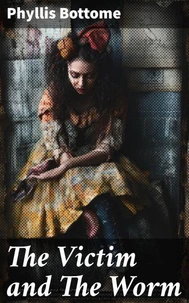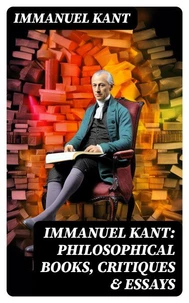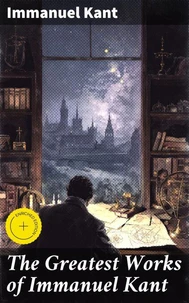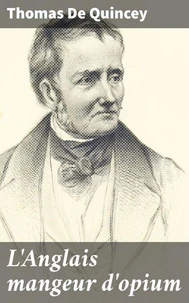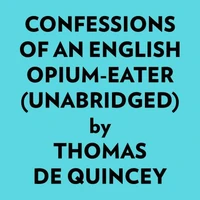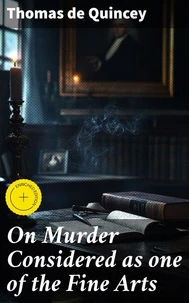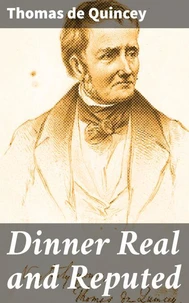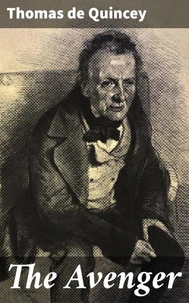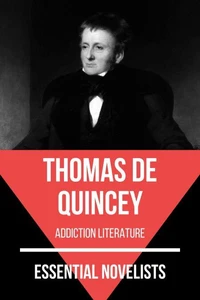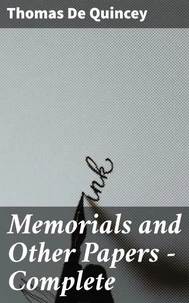On Murder Considered as one of the Fine Arts
Par :Formats :
Disponible dans votre compte client Decitre ou Furet du Nord dès validation de votre commande. Le format ePub est :
- Compatible avec une lecture sur My Vivlio (smartphone, tablette, ordinateur)
- Compatible avec une lecture sur liseuses Vivlio
- Pour les liseuses autres que Vivlio, vous devez utiliser le logiciel Adobe Digital Edition. Non compatible avec la lecture sur les liseuses Kindle, Remarkable et Sony
 , qui est-ce ?
, qui est-ce ?Notre partenaire de plateforme de lecture numérique où vous retrouverez l'ensemble de vos ebooks gratuitement
Pour en savoir plus sur nos ebooks, consultez notre aide en ligne ici
- Nombre de pages29
- FormatePub
- ISBN859-65--4702137-7
- EAN8596547021377
- Date de parution29/05/2022
- Protection num.Digital Watermarking
- Taille259 Ko
- Infos supplémentairesepub
- ÉditeurDIGICAT
Résumé
In "On Murder Considered as one of the Fine Arts, " Thomas de Quincey ventures into a provocative exploration of aesthetics and morality against the backdrop of early 19th-century Britain. This remarkable essay employs a distinctive blend of dark humor and philosophical inquiry, challenging the reader to contemplate murder not just as an act of violence but as an artistic phenomenon worthy of scrutiny and appreciation.
De Quincey's lyrical prose and intricate rhetorical style enhance the literary merit of the text, positioning it within the canon of Gothic literature and early criminal psychology, as he dissects the motivations of both murderer and audience in a meticulously structured narrative that balances grotesque fascination with moral complexity. De Quincey, a notable figure of the Romantic movement, drew upon his own tumultuous experiences and opium use, navigating the realms of addiction and intellectual exploration.
His introspective writings often reflect upon darker aspects of human nature, which profoundly informed his unique perspective on violence and beauty. This work encapsulates not only his intellectual milieu but also the broader cultural currents of a society grappling with the implications of violence captured in popular media and societal narratives. "On Murder Considered as one of the Fine Arts" is essential reading for anyone seeking to understand the intersection of art and ethics, as well as the philosophical underpinnings of violence in literature.
De Quincey's nuanced argumentation invites readers to appreciate the aesthetic dimensions of even the darkest human actions, making this text a compelling and unsettling exploration of art's moral territory.
De Quincey's lyrical prose and intricate rhetorical style enhance the literary merit of the text, positioning it within the canon of Gothic literature and early criminal psychology, as he dissects the motivations of both murderer and audience in a meticulously structured narrative that balances grotesque fascination with moral complexity. De Quincey, a notable figure of the Romantic movement, drew upon his own tumultuous experiences and opium use, navigating the realms of addiction and intellectual exploration.
His introspective writings often reflect upon darker aspects of human nature, which profoundly informed his unique perspective on violence and beauty. This work encapsulates not only his intellectual milieu but also the broader cultural currents of a society grappling with the implications of violence captured in popular media and societal narratives. "On Murder Considered as one of the Fine Arts" is essential reading for anyone seeking to understand the intersection of art and ethics, as well as the philosophical underpinnings of violence in literature.
De Quincey's nuanced argumentation invites readers to appreciate the aesthetic dimensions of even the darkest human actions, making this text a compelling and unsettling exploration of art's moral territory.
In "On Murder Considered as one of the Fine Arts, " Thomas de Quincey ventures into a provocative exploration of aesthetics and morality against the backdrop of early 19th-century Britain. This remarkable essay employs a distinctive blend of dark humor and philosophical inquiry, challenging the reader to contemplate murder not just as an act of violence but as an artistic phenomenon worthy of scrutiny and appreciation.
De Quincey's lyrical prose and intricate rhetorical style enhance the literary merit of the text, positioning it within the canon of Gothic literature and early criminal psychology, as he dissects the motivations of both murderer and audience in a meticulously structured narrative that balances grotesque fascination with moral complexity. De Quincey, a notable figure of the Romantic movement, drew upon his own tumultuous experiences and opium use, navigating the realms of addiction and intellectual exploration.
His introspective writings often reflect upon darker aspects of human nature, which profoundly informed his unique perspective on violence and beauty. This work encapsulates not only his intellectual milieu but also the broader cultural currents of a society grappling with the implications of violence captured in popular media and societal narratives. "On Murder Considered as one of the Fine Arts" is essential reading for anyone seeking to understand the intersection of art and ethics, as well as the philosophical underpinnings of violence in literature.
De Quincey's nuanced argumentation invites readers to appreciate the aesthetic dimensions of even the darkest human actions, making this text a compelling and unsettling exploration of art's moral territory.
De Quincey's lyrical prose and intricate rhetorical style enhance the literary merit of the text, positioning it within the canon of Gothic literature and early criminal psychology, as he dissects the motivations of both murderer and audience in a meticulously structured narrative that balances grotesque fascination with moral complexity. De Quincey, a notable figure of the Romantic movement, drew upon his own tumultuous experiences and opium use, navigating the realms of addiction and intellectual exploration.
His introspective writings often reflect upon darker aspects of human nature, which profoundly informed his unique perspective on violence and beauty. This work encapsulates not only his intellectual milieu but also the broader cultural currents of a society grappling with the implications of violence captured in popular media and societal narratives. "On Murder Considered as one of the Fine Arts" is essential reading for anyone seeking to understand the intersection of art and ethics, as well as the philosophical underpinnings of violence in literature.
De Quincey's nuanced argumentation invites readers to appreciate the aesthetic dimensions of even the darkest human actions, making this text a compelling and unsettling exploration of art's moral territory.


